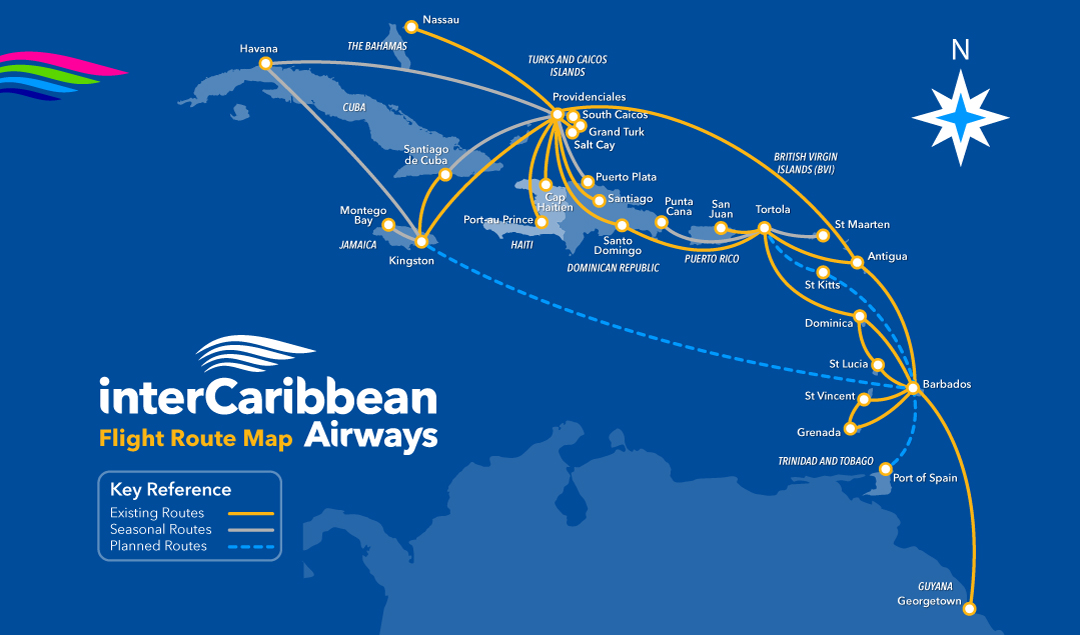InterCaribbean’s first ATR 42 starts scheduled flights
interCaribbean began scheduled operations in early January with its first ATR 42-500, which is registered VQ-THM and was named «Captain Hugo M» in honor of a member of the company.
The ATR 42 was first deployed on domestic flights in the Turks and Caicos Islands, connecting Providenciales (PLS) and Grand Turk Island (GDT), and then began flying to Cap Haitien (CAP) and Port-au-Prince (PAP) in Haiti, and Santiago de los Caballeros (STI) in the Dominican Republic.
On this first ATR, the front fuselage area features the official logo of the Caribbean Tourism Organization (CTO). As a member of the CTO, interCaribbean is the first airline to display this logo representing the region.
According to the company, the entry of the new model to the fleet will increase seating capacity by 60%, replacing the 30-seat Embraer 120 on the most demanding routes.
In addition, it emits 40% less CO2 than the Embraer, in line with the Turks and Caicos government’s needs to reduce emissions in the Caribbean.
The passenger cabin has a 2-2 configuration, with the first two rows providing more space and seats facing each other.

More aircraft in the future
interCaribbean is one of the leading airlines based in the Caribbean, operating to 24 destinations in most countries in the region.
It has bases in Providenciales (PLS), Turks and Caicos, connecting the northern Caribbean; Tortola (EIS), British Virgin Islands, connecting the Lesser Antilles and parts of the Caribbean West Indies and, finally, Bridgetown (BGI), Barbados, connecting the southern Lesser Antilles and Guyana in South America.

Its fleet consists of Twin Otter aircraft, eight Embraer 120s and three Embraer ERJ 145s. The first ATR 42 entered in the last quarter of 2021, and since then it has operated only charter flights.
The company suffered the crisis of supply shortages and pilot shortages, which forced it to suspend and reduce several flights during the second quarter of 2022.
After passing the crises, InterCaribbean announced that it will add an unspecified number of ATR 42s to its fleet. As the new aircraft arrive, it will add new routes and frequencies, planning to land in Basseterre, St. Kitts and Nevis; and Port of Spain, Trinidad and Tobago.
The company rules out the retirement of its Embraer 120s, as it is studying the possibility of converting them into freighters to feed the Caribbean cargo network.

/https://aviacionlinecdn.eleco.com.ar/media/2022/05/interCaribbean-Airways-2122-1000x650-1.jpg)
Para comentar, debés estar registradoPor favor, iniciá sesión